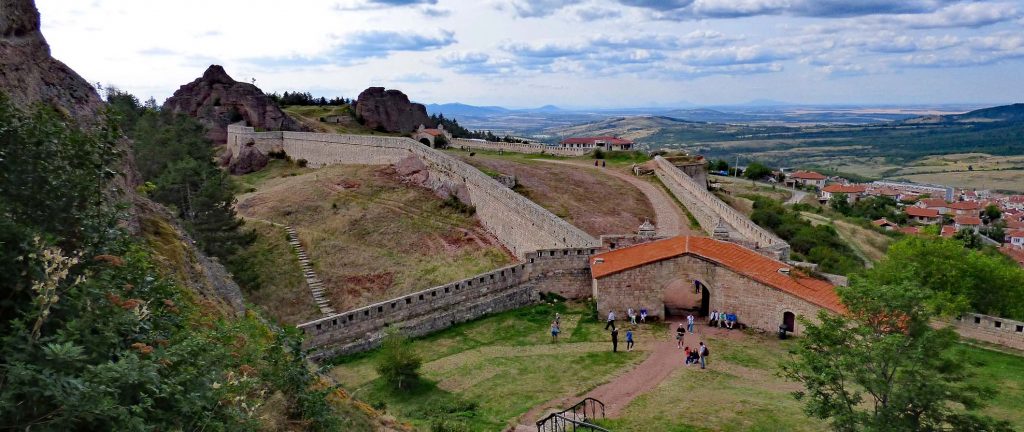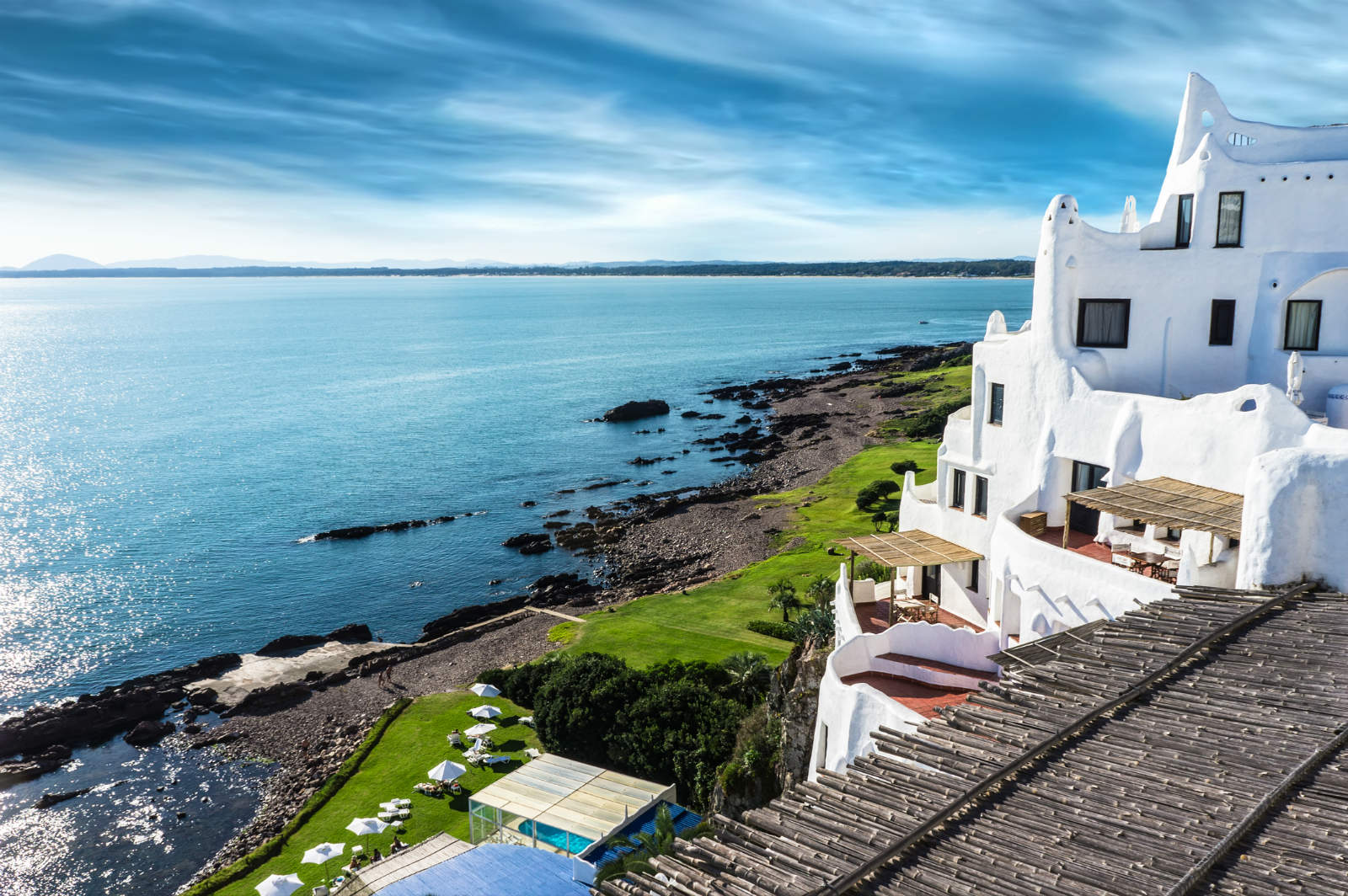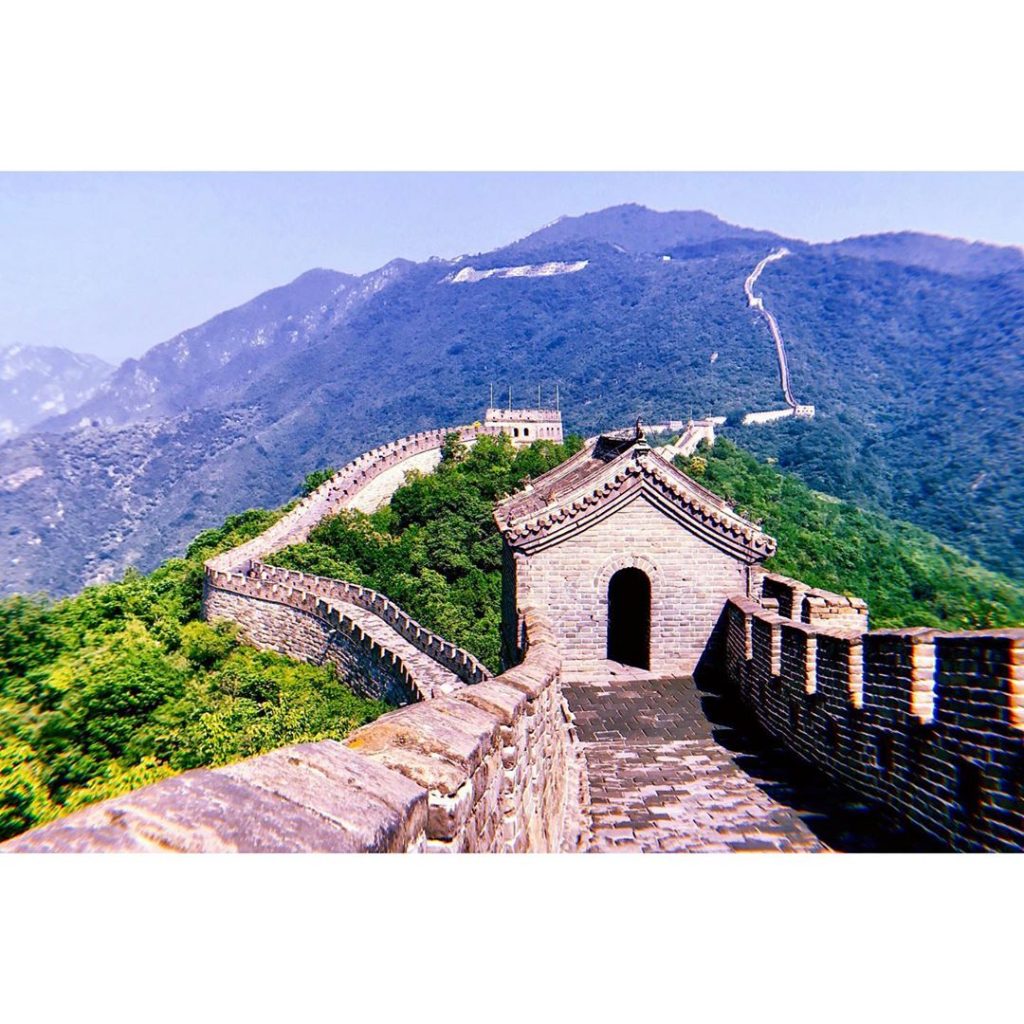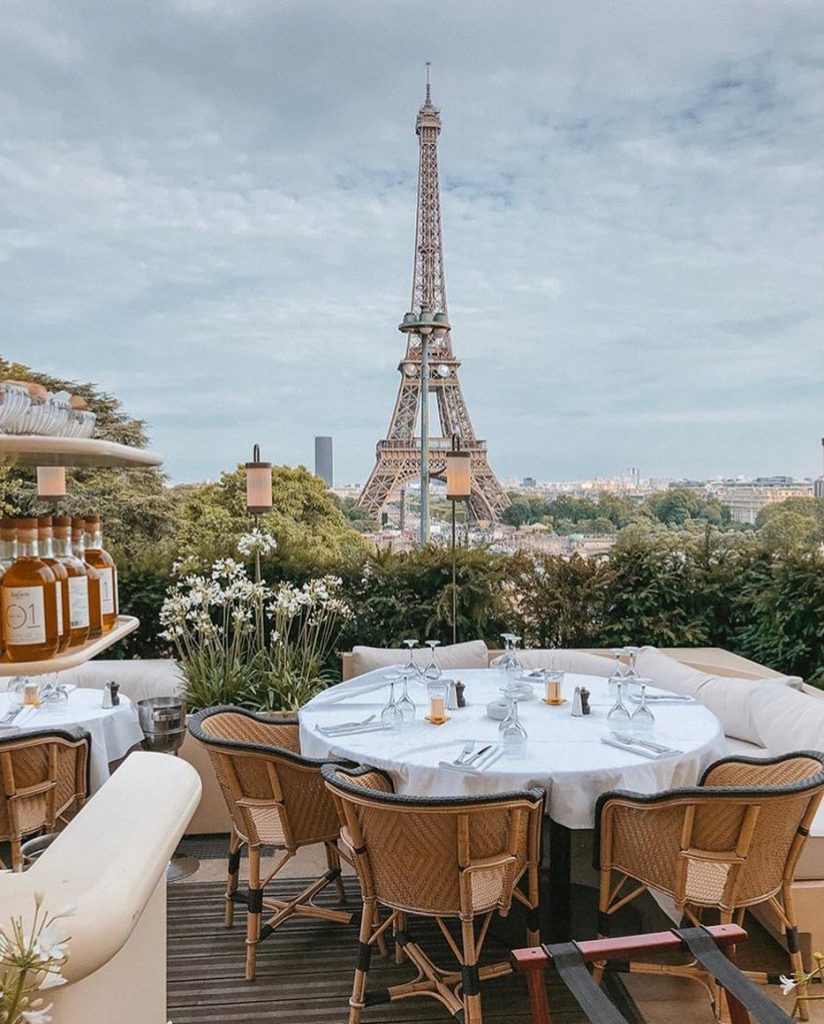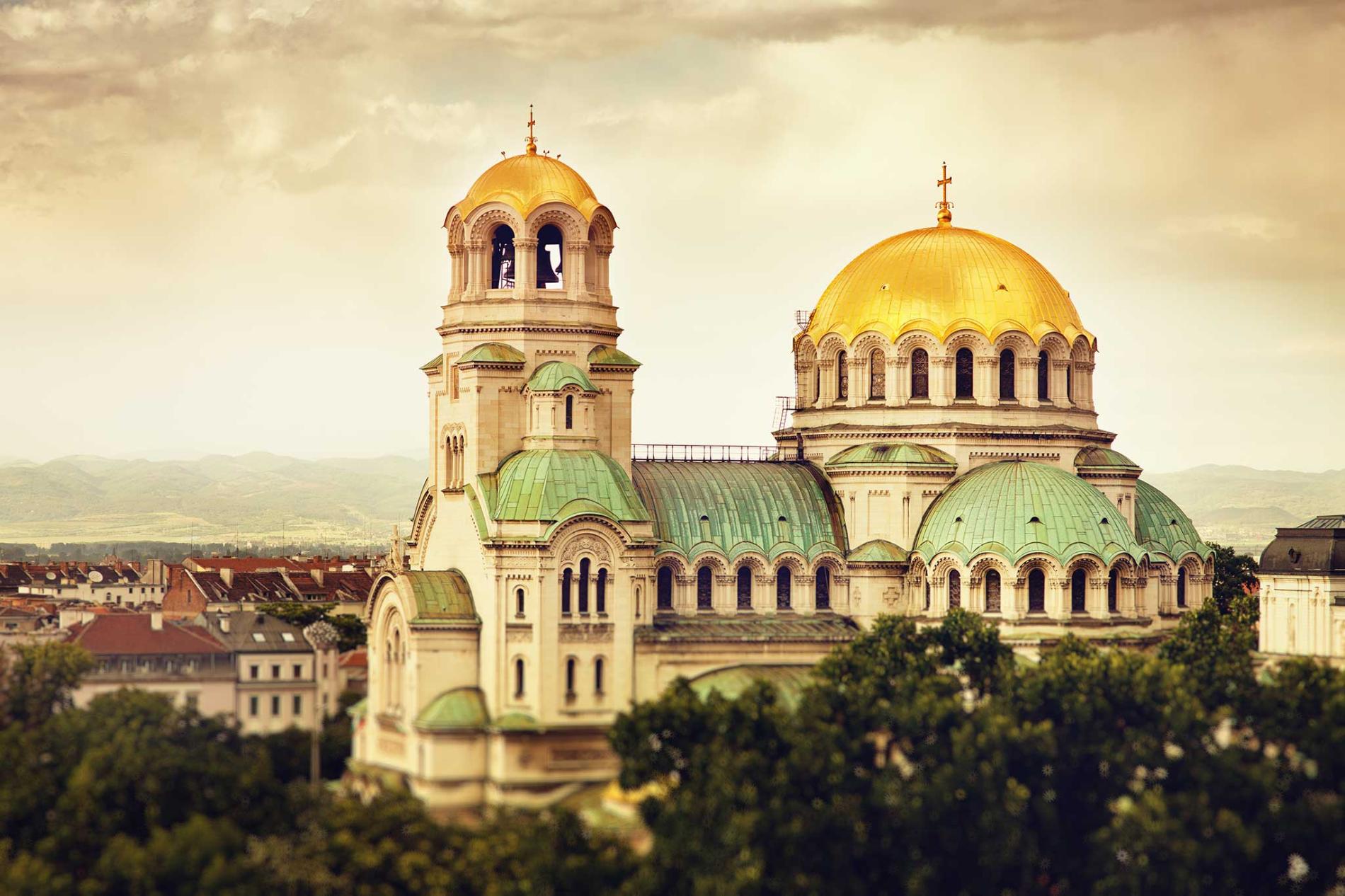
Being part of the Balkans in Eastern Europe, Bulgaria is a country that has been attacking tourism in recent years with its impressive mountains, beautiful beaches and unspoilt towns in the Western Black Sea. Located at the crossroads of Europe and Asia, Bulgaria is a country that combines the legacy of the communist era with vibrant modernity and a unique style.
For some reason I liked Bulgaria, where those who left us do not get too warm and talk about good things. My travel to Plovdiv, Sofia, Haskova and Rhodope was enough to love this country. The beautiful and peaceful country of Bulgaria combines stunning landscapes, countryside tranquility, peaceful life and delicious food in its small area. Greener and safer than we expected.
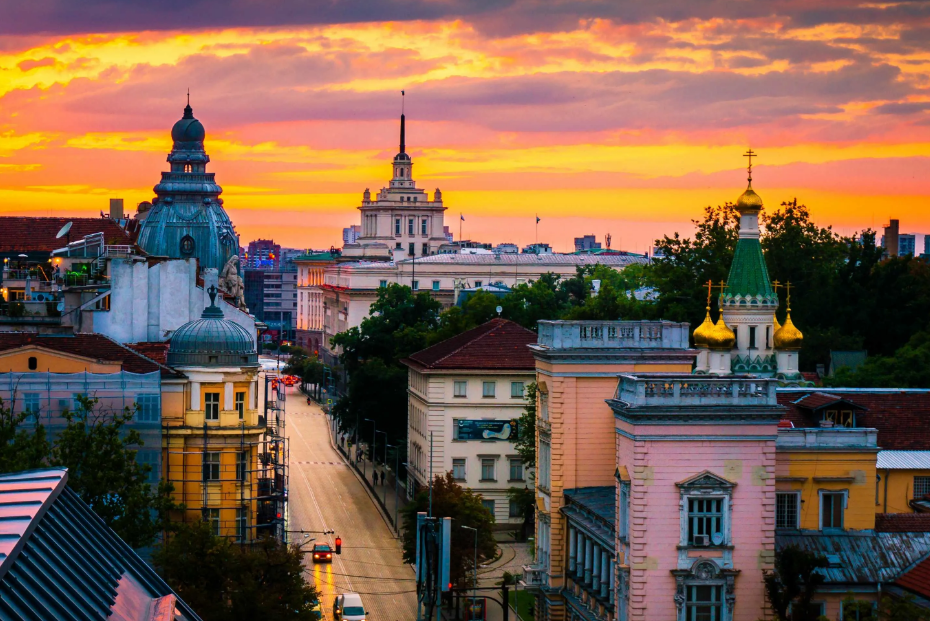
Bulgaria travel guide
Bulgaria is located in Eastern Europe. Romania and north of the Danube, the Black Sea to the east, Turkey and southern Greece, while Serbia is surrounded by the western and northern Macedonia. The Balkans cross the country and reach the golden shores and beaches of the Black Sea.
Bulgaria is part of an important transit route between the Mediterranean and Eastern Europe, which is the main road Turkish citizens want to follow to European countries by land.
Bulgaria Travel Guide
Bulgaria is a country in the Balkans on the Black Sea coast. The country consists of regions separated by the Balkan Mountains and the Rhodope Mountains and is located in southeastern Europe. The history of Bulgaria, the oldest country in Europe, dates back to 681. The country, which has been one of the rare countries that has not changed its name since its establishment, is known as the 16th largest country in Europe.
Now one of the countries through which the Danube river, northern Romania, Bulgaria, Serbia to the north and west, in southern Macedonia, Greece, southeast and neighboring Turkey. The country, which has been a cultural and economic center for centuries, attracts tourists mainly along its 380 km coastline.
Thracians, Greeks and Romans lived for many years in Bulgaria, where settlement began in prehistoric times. The first Bulgarian state founded in 681 lasted until 1018. The second Bulgarian state was founded in 1185 and was conquered by the Turks shortly after its establishment. Bulgaria, which remained under Ottoman rule for nearly 500 centuries, became an independent king in 1908. During the Cold War, a third Bulgarian state was established in the country that was affiliated with the Warsaw Pact after the 93 War.
Currently considered as the 16th largest country in Europe, Bulgaria has a population of approximately 7 million 154,000 people. The country consists of 28 provinces on an area of 110,994 square kilometers. Bulgaria has been a member of NATO since 1999 and a member of the European Union since 2007. The official language of the Republic of Bulgaria is Bulgarian. Other Balkan languages, especially Turkish, are spoken in the country.
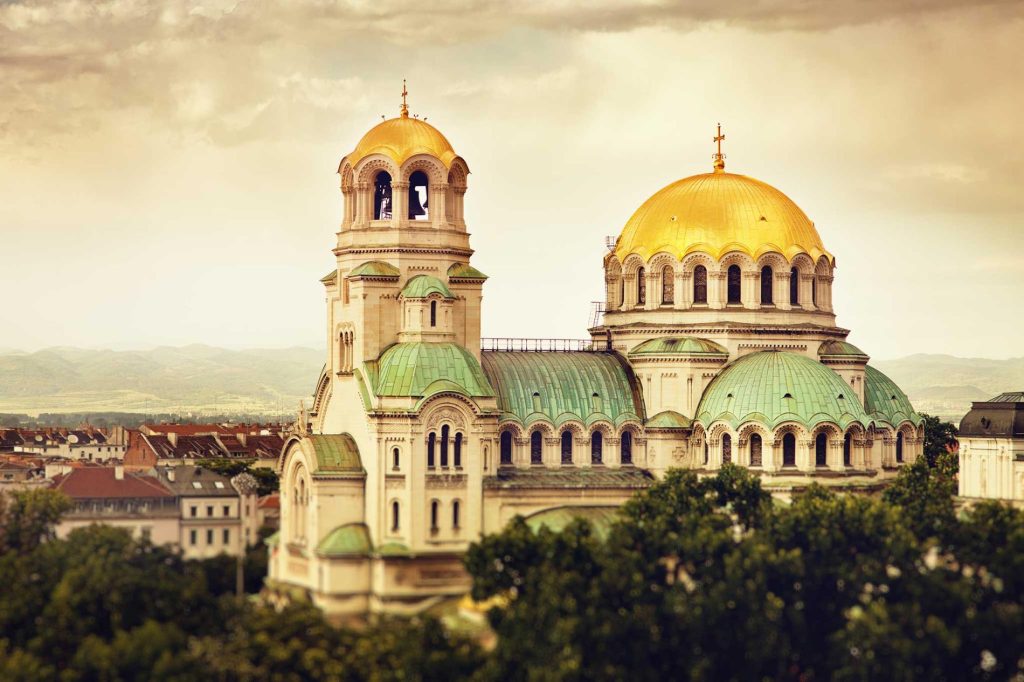
The Bulgarian Orthodox Church still exists as the oldest Slavic Orthodox Church. In the country where the majority of the population is Orthodox Christians, there are 6.5 million Orthodox Christians, 966 thousand Muslims, 43 thousand Catholics, 42 thousand Protestants and 15 thousand people from other religions.
In Bulgaria, where most of the income comes from the service sector, the service sector is followed by industry with 29% and agricultural activities with 14%. The country, where most of the agricultural activity is related to vineyards, winemaking and rose growing, meets 85 percent of the world’s rose oil needs.
In Bulgaria, where the shape of the surface is determined by the Great Balkans, Rhodope and Rila mountains, there are more than two thousand caves between these mountains. Tourist centers of the country are mainly located on the Black Sea coast. The country, where Musala Hill, the highest point of the Balkans, is located, is home to 54 nature reserves, 11 nature parks and 3 national parks.
Bulgaria has more than 700 natural mineral waters and hot springs known for their hot springs since Roman times. In these regions where 35% of Bulgaria is covered with forests, animals such as deer, bears, wolves, foxes, jackals and even lynxes live. The bacterium Lactobacillus Bulgaricus, which is used in making yoghurt from milk, takes its name from Bulgaria, the country where it first appeared. As the bacteria ferment, yogurt acquires a distinctive taste and texture.
Nine historic buildings in Bulgaria are on the UNESCO World Heritage List. These include the 8th-century Madara relief, the Knight, the Ivanovo rocky churches consisting of 13th-century churches, chapels and monasteries, the Rila Monastery and Necropolis, Bulgaria’s largest and most popular Eastern Orthodox monastery. Varna, where peace reigns, is the oldest gold treasure. Old Bulgarian calendar, M, Sveshtari’s Thracian tomb and Kazanlak’s Thracian tomb.
The capital Sofia has been the country’s cultural and commercial center for centuries. Nessebar, the pearl of the Black Sea and one of the most important historical and touristic centers of the country, is located on the Burgas peninsula. Nessebar, an open-air museum with a three-thousand-year history, delights visitors.
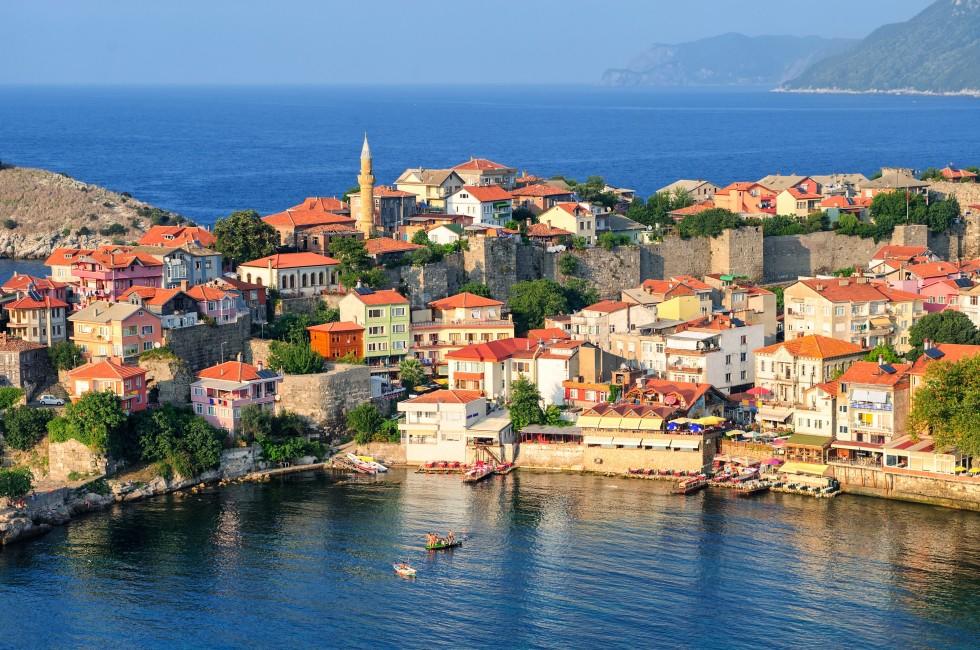
Bulgaria offers a wide variety of alternatives, including protected historical buildings, marine and nature tourism, interesting ski slopes and entertainment. In a country with high visitor activity for 12 months of the year, reasonable prices are attractive.
It is located in the eastern part of the Balkan Peninsula and the eastern Black Sea in Bulgaria, southeastern Turkey, Greece to the south, the west is bordered by Serbia and Macedonia to the north of neighboring Romania.
The most visited cities in Bulgaria are the capital Sofia, Plovdiv, Varna, Burgas and Pleven, which are represented by 9 different values in the UNESCO World Heritage List. One of the main advantages of the country is that food and drink, nightlife, transportation and souvenirs are cheaper than the European average.
Green nature and clean air in the Pirin Mountains and national parks; Knowing the wine, red meat and cheese you create unforgettable moments. leaving traces of Soviet and Ottoman Turkey at the foot of the street can be seen in just 1 hour flight.
Bansko, one of Europe’s most famous winter sports centers with its urban life, culture and history, has become popular among Turks in recent years. It is very difficult to find a place in Bansko with its quality tracks and equipment that meet the expectations of ski lovers in winter.
The capital and largest city of the country is Sofia, and the country’s Black Sea coast is full of visitors as beaches and ski resorts are cheaper than many European cities. The country, which has become attractive by losing its communist image with its wide streets reflecting Soviet architecture, second-hand shops and lively nightlife, is also rich in natural beauty.
The country prides itself on its rural traditions, where you can see the true spirit and hospitality of Bulgaria in its cities and towns. There are many activities in Bulgaria such as rafting, trekking, climbing, cave walking and wildlife watching. This is a true paradise for those who want to be alone with nature. Skiing is the reason most tourists come to Bulgaria in the winter.
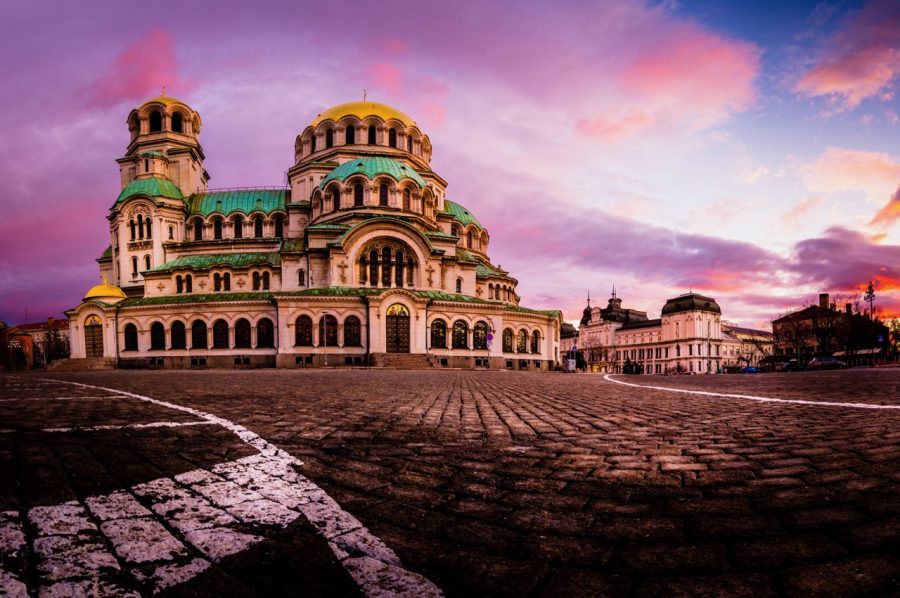
Those interested in history will follow in the footsteps of Bulgaria’s ancient Orthodox churches and Byzantine heritage with religious art traditions. Many distant and impressive monasteries await visitors from all over the country with their exquisite frescoes.
Bulgaria sights
If you are looking for a country where you can see the differences together, Bulgaria should definitely be on your list. A rich history and traditions, ancient cities, sea, sand and sun tourism and a coastline favorable to economy make Bulgaria an ideal route for all budgets.
Balkan Mountains covered with pine trees and Rhodope Mountains meet the blue waters of the Black Sea. There are many alternatives in Bulgaria, from sunny beaches to a fascinating historical past, from a fun nightlife to ski resorts.
- Sofia
Bulgaria Travel Guide
Sofia was established at the foot of the Vitosha Mountain, surrounded by mountains in the vast Sofia Valley, where several small rivers flow. Living with Anatolia for 500 years in the Ottoman period, Sofia has the traces of various civilizations with its 7,000-year history. Today Sofia is a true European capital. A city with a sense of time travel with its centuries-defying churches on busy streets where Byzantine and Ottoman characteristics are synthesized.
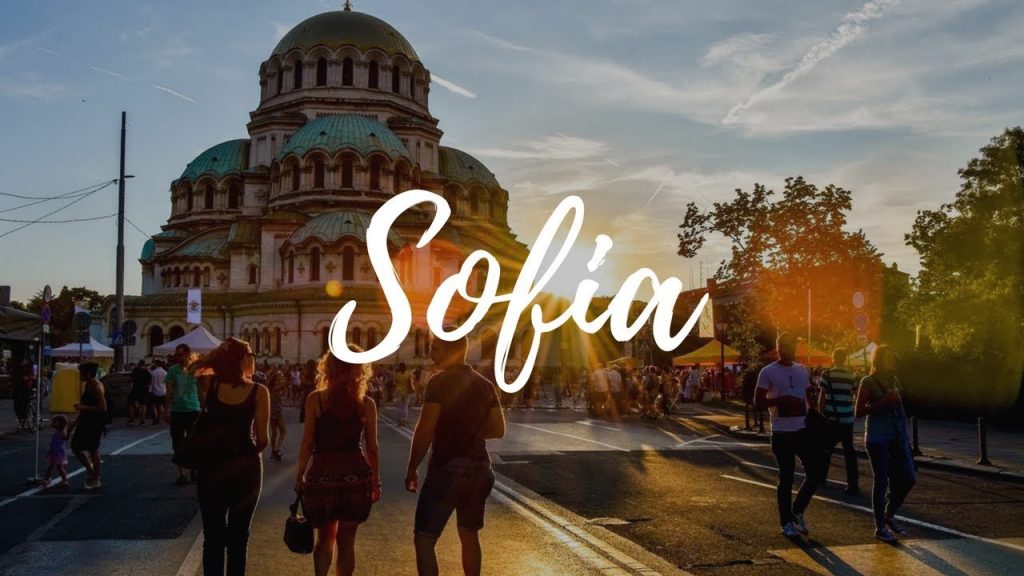
Sofia, the capital of Bulgaria, is beautiful where you can feel the reflection of the country’s rich past. The city is surrounded by tall buildings that require special care. Called the great monuments and public housing, these are symbols of Soviet rule. In the city center, near Serdica Castle, the iconic orthodox domes shine against the snowy peaks of Vitosha Mountain and richly decorated with gold leaf. George’s Roman-Byzantine Church and Alexander Nevsky Cathedral. important religious buildings.
Saw. Holy century. Visit Hagia Sophia, an ancient bazaar, and the characteristic yellow stone road to King Savior Boulevard, the ruins of Largo de Stalin and the Roman settlement of Serdica. The surroundings of the Benya Başı mosque is a pleasant area with its traditional and multicultural atmosphere. The mineral springs of its fountains, covered bazaars, the central synagogue in Sofia and the women’s market are the places worth seeing in Sofia.
- Plovdiv
Bulgaria travel guide filibe
bulgaria kemal kaya
Plovdiv (Plovdiv) is a multinational Bulgarian city with ancient Roman theaters, castles, monuments, National Revival churches and Ottoman ruins. Plovdiv, located on seven hills in the Martisa stream bed, was known as Filibe during the Ottoman period. The most popular spot in Plovdiv is the historic center of narrow, winding streets, Byzantine arches, and secret squares. Plovdiv’s nightlife, which is a vibrant coffee culture, is also famous.
In Plovdiv, where it is very easy to walk around, you can see the whole city without any means of transportation. The most important building in the city is the Roman Stadium. In addition to the stadium on Prince Alexander I Street, the busiest city center, Juma Mosque, Stefan Stambolov Square (Kumayat) and Nebet Tepe ancient city should be included in your list of places to visit.
- Varna
bulgaria catalog varna
Varna is one of the most famous resorts on the Black Sea coast. Varna, where Bulgarians coming from Sofia and Plovdiv in the summer are saturated with sun, sand and sea, is about 5 hours drive from Sofia.
Varna, one of the most beautiful seaside cities in Bulgaria, attracts history and culture enthusiasts with its rich historical background, Roman baths and vibrant Orthodox architecture. Varna beaches along the Black Sea invite seafood restaurants and cocktail bars, while nightclubs and beach bars come to life after dark.
Wander the winding streets of Varna’s historic Greek quarter and see the houses, churches and synagogues. It is also home to the impressive ruins of Bulgaria’s largest Roman baths. Varna Cathedral, which has become the symbol of the city, is worth seeing. With the Opera in front of the cathedral and a fountain in front, Plaza de la Independencia is a great place to take pictures.
One of Varna’s not to be missed places is the historic Art Nouveau train station. Interesting landforms around the city of Slanchevo can be added to places where the Pobity Kamani (Pillars of Peace) can be seen.
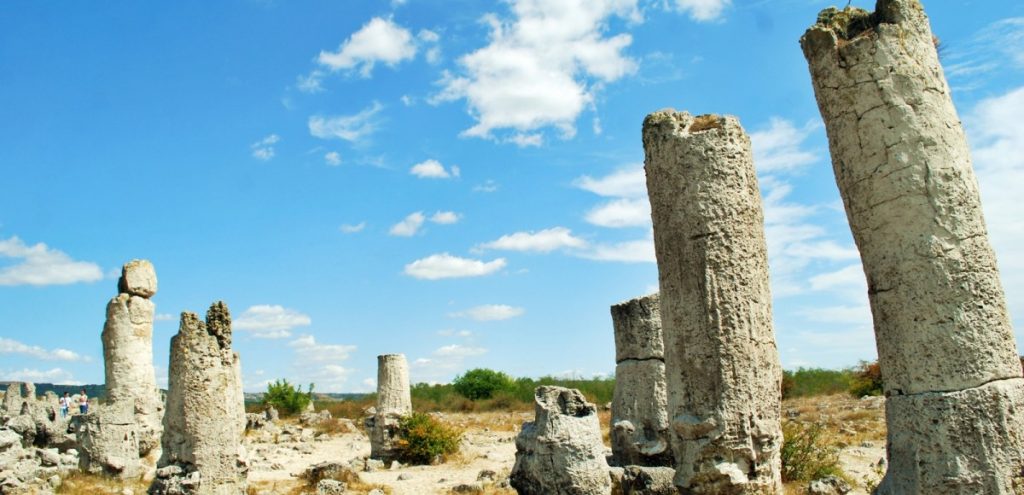
- Burgas
Bulgarian leader Burgas
Burgas is a tourist city in eastern Bulgaria, on the southern Black Sea coast. Burgas also hosts one of the best Bulgarian music festivals, such as the annual Burgas Spirit.
The northern coast of Burgas is the most visited beach in the city. Burgaz welcomes nature lovers with venues such as the natural wonder Vaya and Atanasovsko Lake, which are also a paradise for bird watchers.
- Bansko
Bulgaria Blog Directory
Bulgaria Bansko Catalog
Bansko is the most famous winter sports center in Bulgaria. It is about 150 km (two hours by car) from Sofia. Combining traditional architecture with new designs, Bansko is located at the foot of Pirin Mountain, next to Pirin National Park, which is on the UNESCO World Heritage List. The city’s historic quarter is full of white painted mansions with a labyrinth of 17th and 19th century streets.
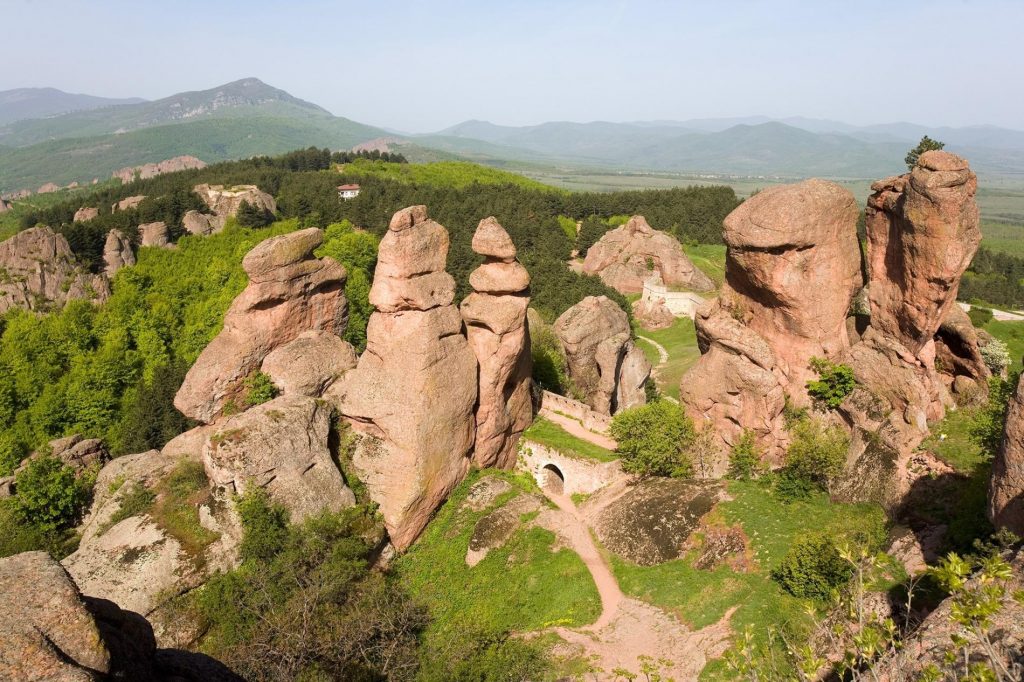
Bansko is the most popular ski area in Eastern Europe, with ski slopes Chalin Valog and Shiligarnitsa situated among pine forests. There is a large influx of visitors in winter, with a total of 75 kilometers of slopes for beginners, advanced and advanced skiers. The magnificent view of the Pirin mountain range, luxury hotels, bars, jazz clubs and Bulgarian restaurants is worth seeing in Bansko, which has been a winter holiday route for Turkish tourists in recent years.
If you have time, go to the village of Dobrinishte, take the cable car to the charming Lake Bezbog at 2,236 meters and admire the natural beauty of Pirin from the air.
Pirin National Park 6
Pirin Bulgaria
Pirin National Park is located close to the Macedonian-Greek border. With its pine trees and snow-covered slopes, the Vihren Peak of the Pirin Mountains is 2,914 meters high. The snow-covered hills are surrounded by fog, and the mountain valleys below are decorated with green pines and spruce forests.
The national park is a UNESCO world heritage site. In the national park, you should definitely see the Baikuseva Mura 1300-year-old fir.
7.Veliko Tarnovo
Bulgaria Veliko Tarnovo
Veliko Tarnovo rises at the foot of the mountains in northern Bulgaria. The city view, divided into sections by S-shaped curves floating over the water channels of the Yantra River, is impressive.
The charming cobblestone streets and traditional buildings make up the general structure of the city. Don’t leave the legendary City of Kings without visiting the royal government building and magnificent Byzantine churches.
- Zheravna
Zheravna Bulgaria
Zheravna is located at the foot of the Balkans. The number of wooden buildings preserved in the city, which is the symbol of the Bulgarian national resistance, exceeds 150. Among the buildings are Yordan Yovkov’s house and the famous St. Nicholas Church. Agusta Dobromirista Rural Park, the center of festivals where Bulgarian culture and music flourishes, is the main attraction of the city.
9.Rila Monastery
Rila Monastery
Rila Monastery has an architectural knowledge that combines Arabian, Byzantine and Roman styles. The monastery’s colorful gardens, which were declared a UNESCO World Heritage Site in 1983, have imposing and colonnaded courtyards adorned with medieval frescoes and breezes.
- Pamporovo
Pamporovo Bulgaria
Pamporovo is located between the steep slopes of the Rhodope mountains in the south, very close to the Greek border. Pamporovo is one of the best ski areas in Eastern Europe with its 36 kilometers of pistes and stunning landscape. The famous mountain town of Bulgaria receives hundreds of thousands of visitors in winter.
- Belogradchik
Belogradchik Bulgaria
Belogradchik is located in an area of geological structures composed of fairy chimneys and humanoid monoliths and is the subject of many local myths and folklore legends. In addition to these structures known as Belogradchik Rocks, Belogradchik Castle, Baba Vida Castle and Magura Cave are also interesting places. - Koprivshtitsa
Bulgaria Koprivshtitsa
Koprivshtitsa is a cute town between fir and pines and the valleys of Sredna Gora. The city, which has many buildings dedicated to the heroes of the April 1876 Uprising, occupies an important place in the history of Bulgaria. - Perperikon
Perperikon Bulgaria
Perperikon is more than seven thousand years old; This is a must-see for those who love Bulgarian history and culture. The ancient city is located 15 km northeast of the city of Kardzhali, east of the Rhodope Mountains. It offers a beautiful view of the rocky hills at an altitude of 470 meters above sea level. - Nessebar
Nessebar Bulgaria
Nessebar is one of the tourist centers on the Black Sea coast of Bulgaria. Included in the UNESCO World Heritage List, Nessebar is also home to the ruins of ancient Thracian cities. The city also has fortifications known to keep Ottoman Turks and Crusaders away. The city’s beaches, which are flooded by tourists in summer, scream.
Bulgarian cuisine
In Bulgaria, where you can find examples of all cuisines in the world, be sure to try local cheddar cheeses and wines. Dried meats, local sausages and bacon, sarmi (wraps), snezhanka (yogurt made with nuts and garlic), chorba (bean soup), chushki burek (stuffed peppers stuffed with cheese), kavarma (cooked with meat and vegetables), tarator (cold yogurt and cucumber soup) and mermaid (Bulgarian white cheese) are the tastes to try.
When to go to Bulgaria
Bulgaria is surrounded by high valleys and forests separated by rivers. The fact that the land is generally above sea level and away from the sea breeze with a mild climate makes the winter months harder. In the east of the country, the effect of the mild climate is observed on the Black Sea coast.
Summer is the best time to visit Bulgaria. It is the right choice for those who want to spend their summer vacation especially in July and August, which are the busy seasons of the Black Sea coastal resorts. For those interested in winter tourism and skiing, the months from the end of November to the end of February are the months when the ski centers operate at full capacity.
Where is Bulgaria?
How do i go to bulgaria?
Bulgaria applies for a visa for Turkish citizens. Visa applications must be sent to intermediaries with a valid passport for more than 180 days. Special passport (green) holders are exempt from visa for 180 days to 90 days, diplomatic passport (red) and service passport (gray) holders are exempt from visa for up to 30 days.
There are regular flights every day from Istanbul to Sofia, the capital city of Bulgaria. The capital Sofia can be reached in 1.5 hours by plane. There are bus connections from Istanbul, Bursa, Edirne and Izmir to Bulgarian cities such as Sofia, Plovdiv and Kardzhali.
The Turks, with alternative bus connections between Bulgaria and Turkey because of Turkey’s relations with relatives living in various companies in Bulgaria. Another way to get to Bulgaria is by private vehicle. You can reach many cities of Bulgaria from Edirne Kapıkule.
Bulgaria is the oldest country in Europe and is located in the east of the Balkans. From the shores of the Black Sea to the lush mountains with ski resorts, from the Danube landscapes to the charming towns and cities that protect the local nature, the country is a unique tourism center.
